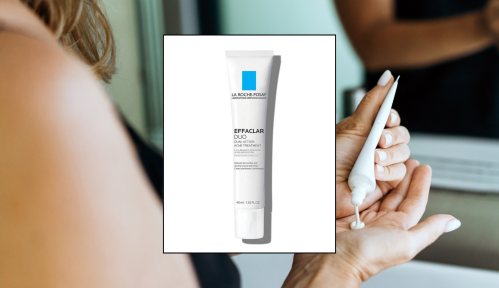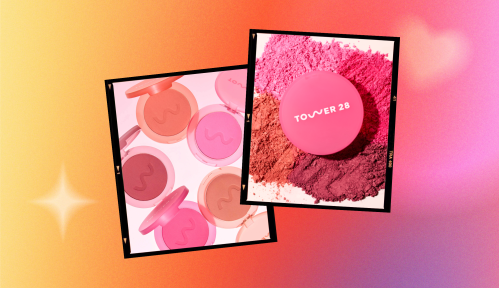You might not spend much time thinking about, ahem, “going number two,” until you suddenly can’t—and then it becomes hard to think about much else. Luckily, there is a range of hacks you can try if you become backed up, including pressure points for constipation as well as stretches for relief. One thing to keep in mind, though, is that there’s isn’t one set treatment that will help get things moving again.
Experts in This Article
doctor of physical therapy specializing in women’s health
Claudia Sanmiguel, MD, is a gastroenterologist at Providence Saint John’s Health Center in Santa Monica, California.
Kylee Panse, DPT, is a doctor of physical therapy at Spectrum Health’s Women’s Health and Wellness Center.
Claudia Sanmiguel, MD, a gastroenterologist at Providence Saint John’s Health Center in Santa Monica, California, suggests trying a few different things to relieve constipation, including exercising, eating fiber-rich foods like kiwi, drinking plenty of water, trying to keep a regular schedule for bowel movements, incorporating healthy fats into your diet like olive oil and avocado, taking magnesium supplements, and avoiding too much dairy and refined sugar in your diet.
Still, it might surprise you to learn that stretching your pelvic floor—the group of muscles that run like a hammock from your pubic bone to your tail bone—can also help. Most people link the pelvic floor to vaginal function, but it’s also connected to your ability to poop, says Ashley Rawlin, DPT, a doctor of physical therapy who specializes in women’s health issues atOrigin. “One of the many important jobs of the pelvic floor is to assist in bowel function,” she explains. “If the pelvic floor muscles don’t know how to lengthen and open, or aren’t able to open enough, then it may be hard to have a bowel movement.”
Stretching the pelvic floor is “essential to help relieve constipation,” says Kylee Panse, DPT, a doctor of physical therapy at Spectrum Health’s Women’s Health and Wellness Center. She adds, “if the pelvic floor muscles are overactive—specifically the external anal sphincter and the puborectalis—then having a bowel movement will be more difficult.”
Kristen Cook, DPT, a physical therapist who focuses on women’s health at The Ohio State University Wexner Medical Center, agrees. “Constipation can result from tight pelvic floor muscles that are not able to relax properly to allow for fecal evacuation,” she says. “This is where stretching can come into play.”
The right stretches for constipation focus on lengthening, releasing, and coordinating the pelvic floor muscles to optimize your bowel function, says Ciera Grevengoed, DPT, a doctor of physical therapy at Spectrum Health’s Women’s Health and Wellness Center. Here’s a breakdown of the best moves to try when you just can’t go, according to pelvic floor physical therapists.
5 gentle stretches for constipation relief
Butterfly stretch
The butterfly stretch is considered a hip opener, and it’s pretty easy to do. Simply sit down on the floor or a mat and press the soles of your feet into each other. (You can get a deeper stretch by moving your feet closer to your hips.)
Straighten your spine, while keeping your sit bones and legs rooted into the ground. Use your forearms to gently press your knees down, deepening the stretch. Want to go deeper? Fold your upper half over your hips slightly, keeping your legs open and grounded. Try to hold this for at least a minute.
Cat-cow
Get on all fours, with your spine in a neutral position. Then, gently arch your back so that’s raised in a “cat” position. Your head should hang comfortably with your gaze downward. Hold for a moment, and slowly allow your belly to sink while lifting your sit bones up, creating a “cow” shape. Your gaze should be up toward the ceiling. Repeat this several times.
Child’s pose
Kneel on the floor or a mat, keeping your toes together and your knees about hip-width apart. Keeping your back straight, lower your torso toward the mat and between your knees while extending your arms forward. Relax your head and arms on the ground in front of you. Take slow, deep breaths, and try to lengthen your arms a little more as you exhale.
Happy baby
Lay flat on your back on a mat or the floor. Bend your knees toward your chest, with the soles of your feet level with the ceiling. Your knees should be at about a 90-degree angle. Use your hands to grab your feet, keeping your knees spread. Shift your knees toward your armpits, flex your heels into your hands, and gently rock from side to side. Breathe deeply.
Sphinx pose
Lay on your stomach on a mat or the floor. Ground your hip bones toward the floor and place your bent elbows under your shoulders, with your forearms in front of you. Press into your forearms and palms, and lift your upper body, while keeping your legs and tops of your feet pressed into the floor. Keep your gaze forward and take a few deep breaths. Lower yourself and then repeat.
When to see a doctor about constipation
If you’ve tried these stretches along with other lifestyle tweaks, like moving more, staying well hydrated, and eating fiber-rich foods and you’re still not getting relief, Dr. Sanmiguel says it’s time to check in with your doctor.
Oh hi! You look like someone who loves free workouts, discounts for cutting-edge wellness brands, and exclusive Well+Good content. Sign up for Well+, our online community of wellness insiders, and unlock your rewards instantly.
Sign Up for Our Daily Newsletter
Get all the latest in wellness, trends, food, fitness, beauty, and more delivered right to your inbox.
Got it, you've been added to our email list.











